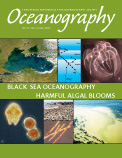First Paragraph
Cultural eutrophication, the pollution of coastal waters by nutrients, is a result of population growth, food production (agriculture, animal operations and aquaculture), and energy production and consumption, and is considered one of the largest pollution problems globally (Howarth et al., 2002). Population growth and food production result in major changes to the landscape, in turn, increasing sewage discharges and runoff from agriculture and populated lands. In addition to population growth, eutrophication arises from the large increases in the use of chemical fertilizers that began in the 1950s and which are projected to continue to escalate in the coming decades (Smil, 2001). Both nitrogen and phosphorus are of concern in eutrophication, but nitrogen has received far more attention because it often limits primary production in estuaries and coastal waters and because the global application of nitrogen from synthetic fertilizers is far greater than that of phosphorus (more information available at http://www.ut.ee/~olli/eutr).

